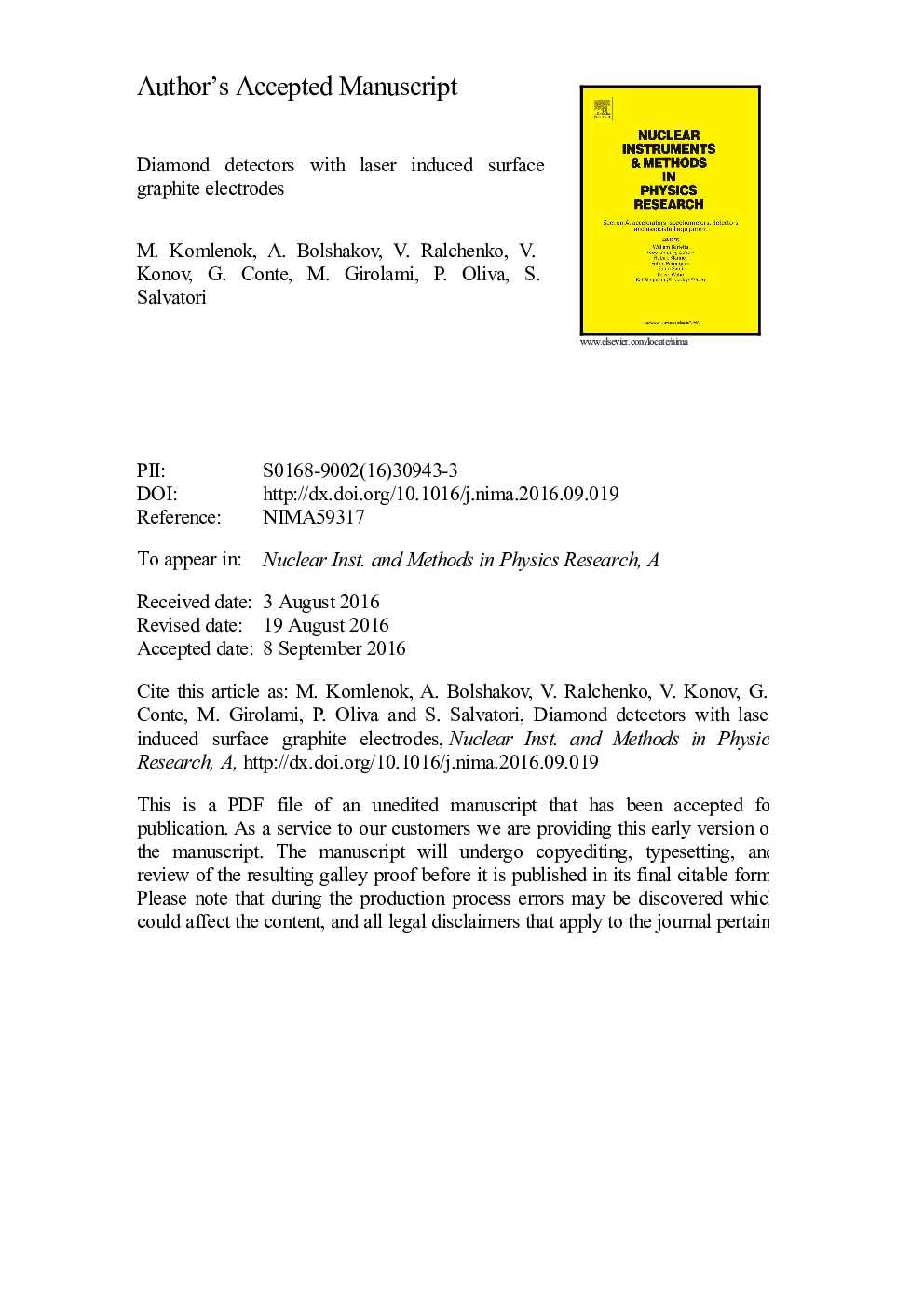| Article ID | Journal | Published Year | Pages | File Type |
|---|---|---|---|---|
| 8167978 | Nuclear Instruments and Methods in Physics Research Section A: Accelerators, Spectrometers, Detectors and Associated Equipment | 2016 | 31 Pages |
Abstract
We report on the response of metal-less CVD polycrystalline-diamond pixel sensors under β-particles irradiation. A 21Ã21 array of 0.18Ã0.18 mm2 pixels was realized on one side of a 10.0Ã10.0Ã0.5 mm3 polycrystalline diamond substrate by means of laser induced surface graphitization. With the same technique, a large graphite contact, used for detector biasing, was fabricated on the opposite side. A coincidence detecting method was used with two other reference polycrystalline diamond detectors for triggering, instead of commonly used scintillators, positioned in the front and on the back of the sensor-array with respect to the impinging particles trajectory. The collected charge distribution at each pixel was analyzed as a function of the applied bias. No change in the pulse height distribution was recorded by inverting the bias voltage polarity, denoting contacts ohmicity and symmetry. A fairly good pixel response uniformity was obtained: the collected charge most probable value saturates for all the pixels at an electric field strength of about ±0.6 V/μm. Under saturation condition, the average collected charge was equal to =1.64±0.02 fC, implying a charge collection distance of about 285 µm. A similar result, within 2%, was also obtained for 400 MeV electrons at beam test facility at INFN Frascati National Laboratory. Experimental results highlighted that more than 84% of impinging particles involved only one pixel, with no significant observed cross-talk effects.
Related Topics
Physical Sciences and Engineering
Physics and Astronomy
Instrumentation
Authors
M. Komlenok, A. Bolshakov, V. Ralchenko, V. Konov, G. Conte, M. Girolami, P. Oliva, S. Salvatori,
